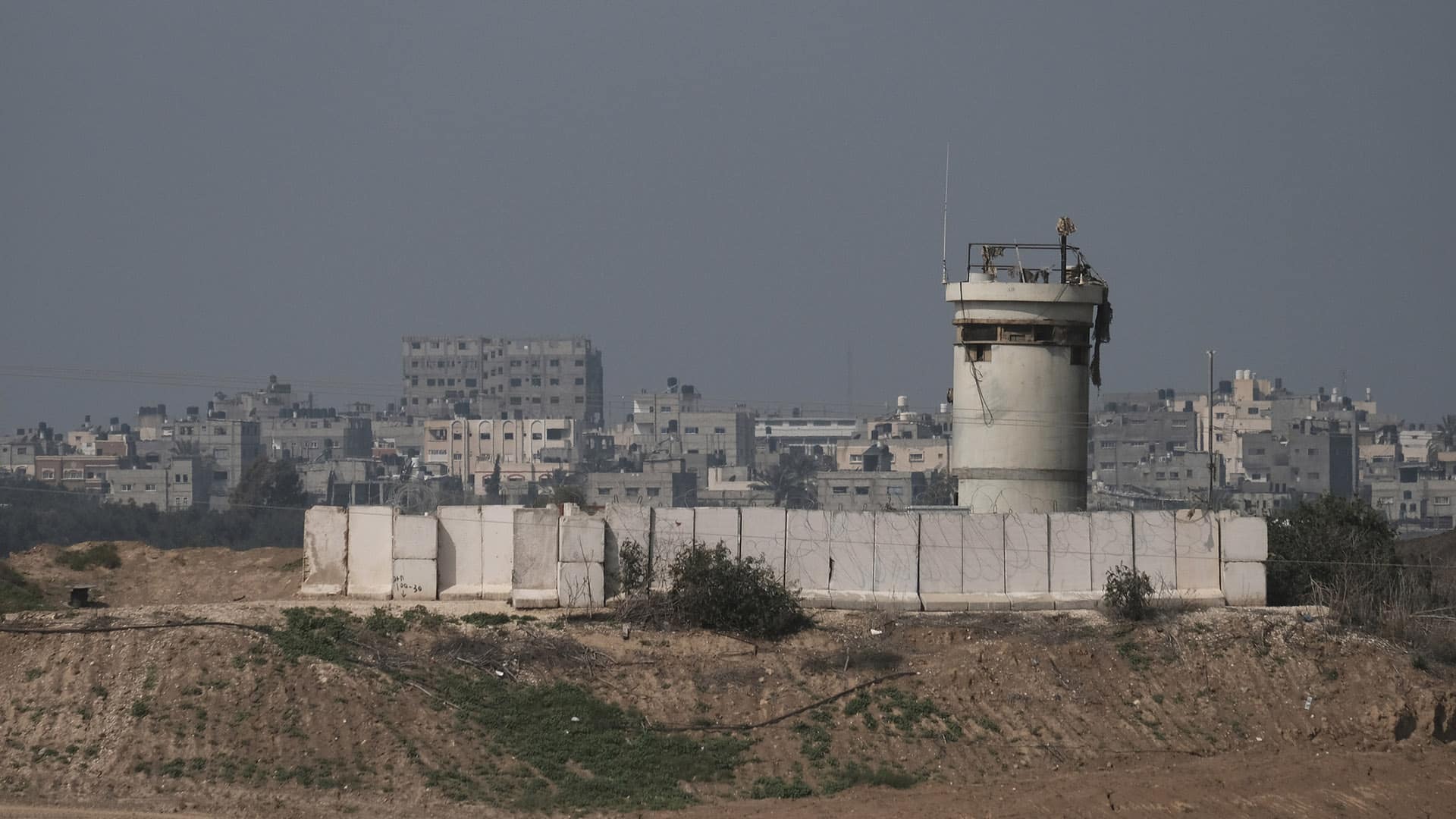Theme
This analysis discusses the implications of the ongoing war in Gaza for transatlantic relations.
Summary
The October 7 2023 Hamas attacks and Israel’s ensuing offensive in Gaza have sent the Middle East back into a state of turmoil. This will have important security and diplomatic implications not only for the Middle East but also for the broader Euro-Atlantic region. Moreover, as it underscores the ongoing relevance of terrorism and counter-terrorism, the current war will likely impinge on transatlantic relations at a time when the US and Europe are striving to re-focus on deterring great-power conflict in Europe and the Indo-Pacific.
Analysis
The horrific attack on Israel by Hamas on 7 October 2023 and the devastating war it has unleashed in Gaza hold the potential to reshape the strategic environment in the Middle East and the Mediterranean. The evolving conflict also underscores the wider security challenges facing Europe and the US, with implications for the future of deterrence, crisis management and burden-sharing. The consequences are potentially far-reaching at a time of shifting global dynamics and critical elections on both sides of the Atlantic.
A hybrid attack
The attack by Hamas and elements of Palestinian Islamic Jihad was extraordinary in terms of its scale, with some 1,200 Israelis and others killed and roughly 240 taken hostage, but also in terms of its hybrid nature. The attack combined elements of terrorism with irregular warfare and an ongoing information campaign. Sophisticated planning and deception were accompanied by straightforward, violent rage. The massive failure of warning and intelligence on the Israeli side will no doubt be researched and debated for years to come. The 7 October experience –and in a very different sense the early lessons from Ukraine– illustrate the dynamic relationship between technology and the human factor, between offence and defence in war. Faith in technology and established patterns of deterrence cannot make up for systemic failures when decisionmakers are simply ‘looking the other way’. Like Russia’s war in Ukraine, but on a much smaller scale, the Gaza crisis also highlights the enduring power of ruthlessness as a factor in international security.
A new wave of terrorism?
Leaderships on both sides of the Atlantic will now have to reckon with a potential new wave of terrorism driven by events in Gaza and their aftermath. In the 1970s and 1980s, Europe was the epicentre of Palestinian terrorism. The more recent experience of terrorism inspired by radical Islamic ideology has been more global. The 11 September and successive attacks in Europe, from Madrid to Brussels, from London to Nice and elsewhere, have driven public perception of the threat. But most attacks and victims of terrorism have been in the ‘south’: in Africa, South Asia, the Middle East and North Africa. There is now a strong indication that the Gaza experience could produce a new wave of attacks in Europe and North America inspired in some fashion by the conflict, the Palestinian cause and jihadist ideology. Even as transatlantic partners grapple with the demands of a conventional war in Europe’s East, they will have to focus on the threat of terrorism on their own territory or aimed at their nationals and institutions abroad. The task of force protection for deployed contingents is also likely to become more demanding in places like Syria, Iraq, the Gulf and the Western Balkans.
If the crisis in Gaza devolves into a protracted urban battle, as seems likely, or if it spreads to Lebanon, transatlantic partners may also have to confront a new iteration of the foreign fighter phenomenon that was a feature of the battle against ISIS in Syria and Iraq. This would pose operational challenges. It would also pose ongoing challenges for society and policy in an already highly charged political environment across Europe. Gaza may not be as porous as Syria or Iraq, although the potential exists for infiltration from Egypt. But Lebanon would be another and more complicated story, with the potential for Iranian and even Russian facilitation of recruitment and logistics.
Trade and infrastructure at risk
Maritime security will be a growing concern and a leading element of evolving NATO and EU strategy looking south. Attacks by Houthi militias based in Yemen, and directly from Iran, have disrupted navigation in the Red Sea and access to the Suez Canal. There is a very real possibility of such attacks spreading to the Eastern Mediterranean, particularly in the event of large-scale conflict involving Hezbollah in Lebanon. Shipping, offshore energy platforms and undersea cables would be at risk. The substantial US, European and other naval forces gathering for commerce protection in the region –and the prospect of direct action against launch sites for drones and anti-ship missiles– may deter further attacks. But the prospect of imposing visible, symbolic costs on perceived allies of Israel may prove irresistible to the various non-state groups deploying these weapons or willing to use small vessels for interdiction. Some, like Hezbollah, possess the ability to strike targets as far away as Cyprus. NATO allies certainly have the resources to address these threats. But the near-term economic and environmental risks cannot be ignored. In addition to the roughly 12% of world trade passing through the Suez Canal, allies will be concerned about the security of energy platforms (Israel has reportedly shut-down some offshore production as a precaution). Greece, Turkey and Cyprus will no doubt worry about the consequences for tourism, including the cruise industry.
Protracted conflict and instability in the Eastern Mediterranean can also impose longer-term opportunity costs. The region’s potential as a centre for future energy production, including renewables and new electricity interconnections, trade and digital infrastructure linking Europe, Asia and Africa will depend critically on regional stability and manageable geopolitical risks. Initiatives such as IMEC (India – Middle East – Europe Economic Corridor) and the EU’s Global Gateway are unlikely to be viable unless some minimal security conditions are met. This reality underscores the growing interdependence of geopolitics and geo-economics on the European periphery.
An Iran strategy on the brink
Broadly speaking, the Biden Administration and the EU have been on the same page with regard to their Iran strategy. Yet diplomacy around Iran’s nuclear programme has not managed to put the JCPOA back on track and Tehran’s enrichment activities proceed apace. On both sides of the Atlantic there has been a hardening of views on Iran, driven by human-rights and foreign-policy concerns. The Gaza crisis and the potential for escalation involving Iran in a more direct fashion will make a measured approach to the use of force against Iran and its proxies more difficult to sustain. The US is already striking at Iranian-backed militias in Iraq and Syria. European and US naval forces are engaging the Houthis in Yemen. Iran-related maritime threats in the Eastern Mediterranean would almost certainly draw a European as well as a US response.
At the same time, the Gaza attack and its aftermath is likely to fuel a sharper debate about the potential for terrorism carried out under an Iranian nuclear umbrella. This was always part of the argument in more hawkish strategic circles. The prospect of unconstrained Iranian nuclear development alongside a resurgence of terrorism and irregular warfare emanating from the Eastern Mediterranean and its hinterlands could shorten the odds of an Israeli and/or US strike against Iran’s nuclear facilities. Even short of this scenario, regional developments are likely to put Iran policy higher on the transatlantic security agenda.
The myth of US disengagement
In recent years, it has become fashionable to decry US disengagement from the Middle East. This is assumed to be driven by a mix of political disillusionment, a changing energy economy and more pressing requirements elsewhere, above all in the Indo-Pacific. Departures from Afghanistan and Iraq have reinforced the image. But with these specific exceptions –Afghanistan is arguably part of a very different regional equation– there is little evidence of disengagement per se. Despite increasingly complicated relations with Israel and Saudi Arabia, the US remains a pivotal diplomatic actor, as the Gaza hostage negotiations make clear. In security terms, the US remains an overwhelmingly important actor, witness the deployment of two carrier battlegroups to the region after the Gaza attack. These deployments are a very visible show of support for Israel in the Gaza conflict, but they are even more relevant as a deterrent to Iran and its proxies in Lebanon and elsewhere. The standing US military footprint in the Gulf may be smaller than in past decades. Yet the US naval and air presence in the Mediterranean has increased. Access to Incirlik airbase in Turkey remains important and activity at Souda Bay in Crete has increased substantially. The bulk of US air and missile defences in Europe are either afloat or ashore around the Mediterranean.
Can Europe hedge?
Is this US commitment to the Mediterranean dimension of European and Middle Eastern security durable? The chaotic state of US politics and election year uncertainties make this a fair question. Even the Biden Administration with its strong orientation towards Europe and transatlantic security has had difficulty funding defence support to Ukraine and Israel. Another Trump Administration or something like it would surely be highly disruptive to alliance relationships on a global basis. The US presence in the Mediterranean and the Middle East would be part of this troubled burden-sharing equation.
Alongside independent (actually, shared) stakes in freedom of navigation and counterterrorism, there will be a perception –not inaccurate– that Europe’s southern flank is an area where the EU can and should do more. Unlike the highly demanding tasks of deterrence and defence vis-à-vis Russia or power projection in the Indo-Pacific, it is possible to imagine an approach to security in the Mediterranean and the Levant in which Europe is the leading actor. EU member states already have the capacity for crisis management and power projection around the region. These are places Europe can reach and where Europe can act. The political cohesion and command arrangements to support this, and the material and logistical ability to sustain it are another question. But if the EU aspires to greater strategic autonomy and a larger geopolitical role, the most relevant and practical tests may be in the south. Hybrid threats emanating from the south and the return of counterterrorism as a strategic priority may also reopen the debate over what counts in the burden-sharing equation. Intelligence, domestic security establishments and other elements not normally present in conventional measures of defence spending could feature in a less orthodox approach to burden-sharing.
Conclusions
Strategic priorities after Gaza
NATO’s revised Strategic Concept and regional defence plans launched at the Vilnius summit offered an opening for more explicit thinking about Alliance strategy looking south. The EU’s Strategic Compass also identified issues and tasks of special relevance to the Mediterranean and the Middle East. In both cases, policymakers and planners will struggle to reconcile a more specific southern strategy with the pressing demands of deterrence and defence vis-à-vis a major nuclear-armed adversary in the East. And for the US, in particular, all of this must be addressed against the backdrop of a growing and unstable strategic competition with China. The diffuse nature of the security environment looking south –Africa will bring its own complexities– has always complicated transatlantic strategy towards the region. This was the case during the Cold War. It remains the case today. That said, the Gaza crisis and related developments highlight the need for more explicit approaches in several key areas.
First, counterterrorism is back as a priority. Few terrorist risks are existential in the strict sense. But they may be politically existential, especially against a backdrop of critical elections on both sides of the Atlantic. The potential role of state sponsors links the terrorism challenge to wider geopolitical tensions. Even at a time of conventional war in Europe, leaders and publics will rightly insist that Alliances and institutions pay increased attention to warning and response in this sphere.
Secondly, maritime security will be a critical area for action. At a time of growing uncertainty about international trade and energy security, the global economy does not need new sources of risk. New assets are not necessarily required for this task, but rather political commitment and a multilateral approach. This is one area where security actors in the West and in much of the ‘global south’ should agree and can act together. Third, the ongoing crisis and looming security and humanitarian needs underscore the significance of closer NATO-EU cooperation in the Mediterranean. Beyond issues of military mobility, cyber security and countering disinformation valid across theatres, strategy South offers special prospects for cooperation. The mix of hard and soft security challenges and the fact that European and US capabilities are relatively balanced here, presents an important opportunity at a time when both institutions are searching for new approaches.



